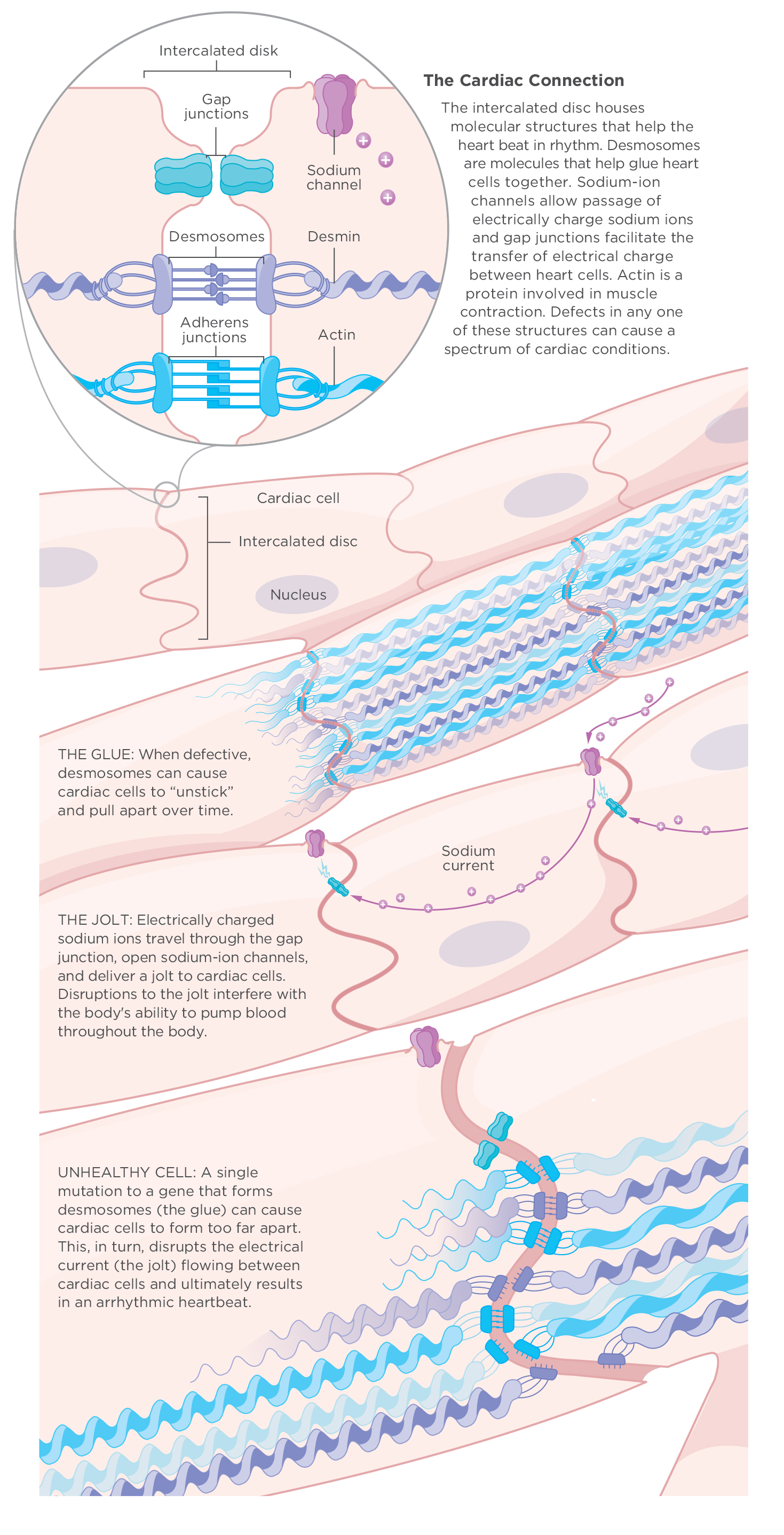Sudden cardiac death, ARVC/D
 A cardiology researcher, Mario Delmar, MD, PhD, and a geneticist, Marina Cerrone, MD, collaborate to understand why the heart can suddenly stop beating in young people in the prime of their lives. The husband-wife duo specializes in an incurable heart condition called arrhythmogenic right ventricular cardiomyopathy (ARVC). This is a heritable disease that affects 1 in 5,000 people in the U.S. In advanced stages, it causes fatty, fibrous tissue to build up in the ventricles of the heart (most commonly on the right side, which pumps blood to the lungs). But even in the earlier “concealed” stages of the disease, when the heart shows no outward signs of distress, hidden damage can disrupt the heart’s electrical rhythms, causing dangerous palpitations, or arrhythmias. In extreme cases, the heart can pound wildly, up to 300 times a minute, leading to sudden cardiac death. Read the full article here: Nanometers From Death
A cardiology researcher, Mario Delmar, MD, PhD, and a geneticist, Marina Cerrone, MD, collaborate to understand why the heart can suddenly stop beating in young people in the prime of their lives. The husband-wife duo specializes in an incurable heart condition called arrhythmogenic right ventricular cardiomyopathy (ARVC). This is a heritable disease that affects 1 in 5,000 people in the U.S. In advanced stages, it causes fatty, fibrous tissue to build up in the ventricles of the heart (most commonly on the right side, which pumps blood to the lungs). But even in the earlier “concealed” stages of the disease, when the heart shows no outward signs of distress, hidden damage can disrupt the heart’s electrical rhythms, causing dangerous palpitations, or arrhythmias. In extreme cases, the heart can pound wildly, up to 300 times a minute, leading to sudden cardiac death. Read the full article here: Nanometers From Death
Each of the heart’s billions of cells connect to each another through a junction called the intercalated disc. The intercalated disc houses molecular structures that help the heart beat in rhythm. Desmosomes are molecules that help glue heart cells together. Sodium-ion channels allow passage of electrically charge sodium ions and gap junctions facilitate the transfer of electrical charge between heart cells. Actin is a protein involved in muscle contraction. Defects in any one of these structures can cause a spectrum of cardiac conditions.
The glue: When defective, desmosomes can cause cardiac cells to “unstick” and pull apart over time.
The jolt: Electrically charged sodium ions travel through the gap junction, open sodium-ion channels, and deliver a jolt to cardiac cells. Disruptions to the jolt interfere with the body’s ability to pump blood throughout the body.
Unhealthy cell: A single mutation to a gene that forms desmosomes (the glue) can cause cardiac cells to form too far apart. This, in turn, disrupts the electrical current (the jolt) flowing between cardiac cells and ultimately results in an arrhythmic heartbeat.
Project: Infographic illustration and layout.
Client: NYU Physician








